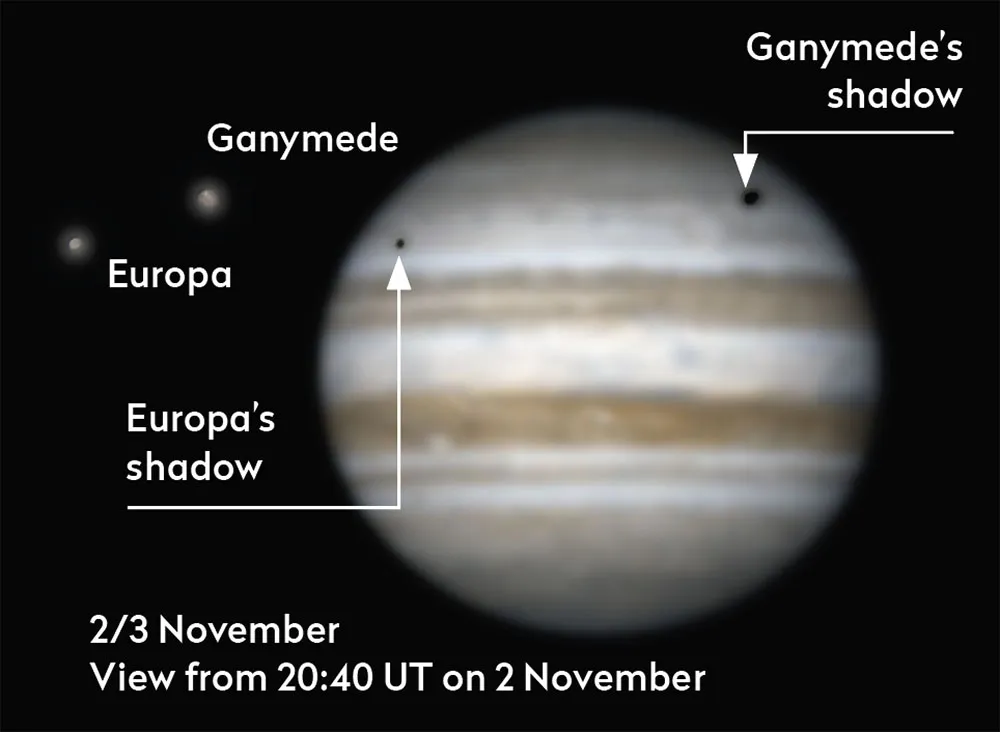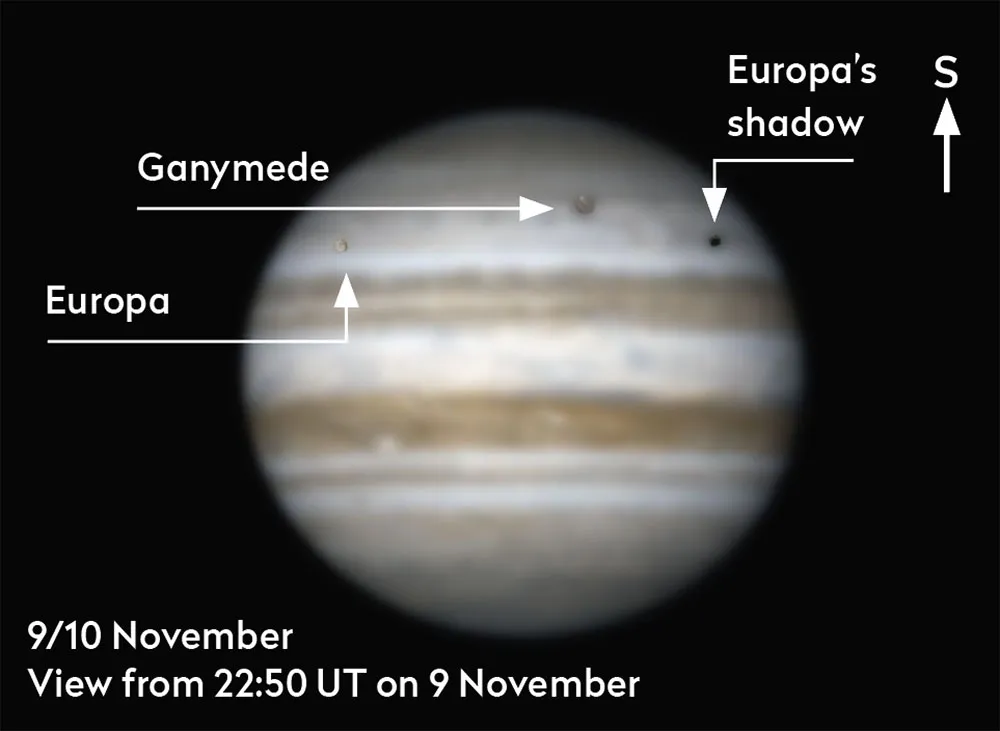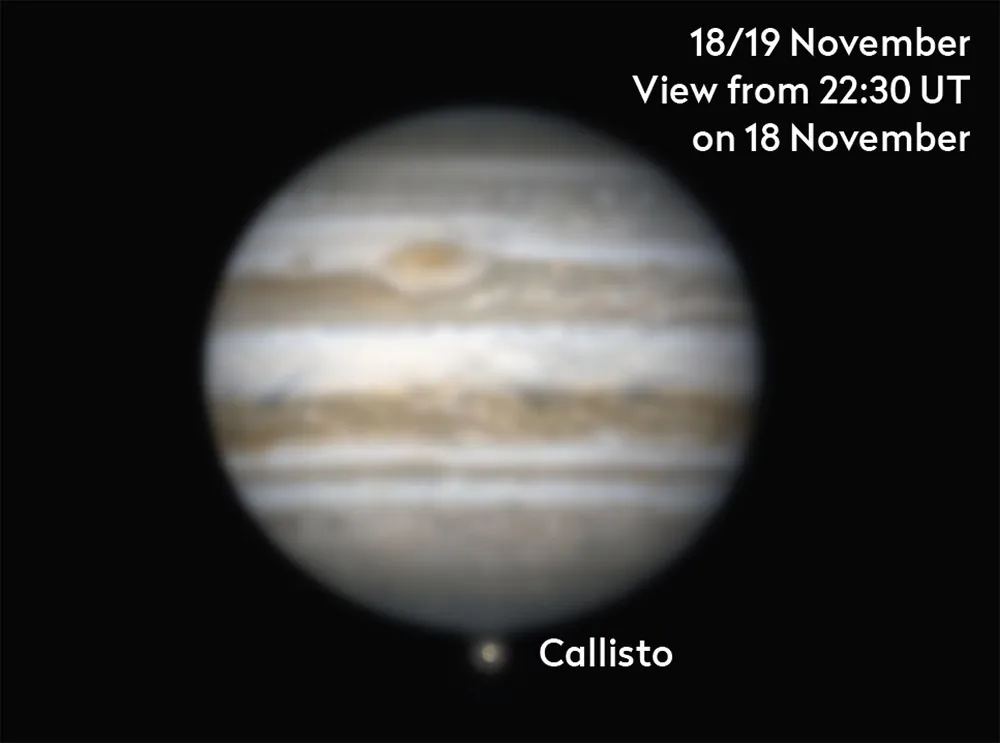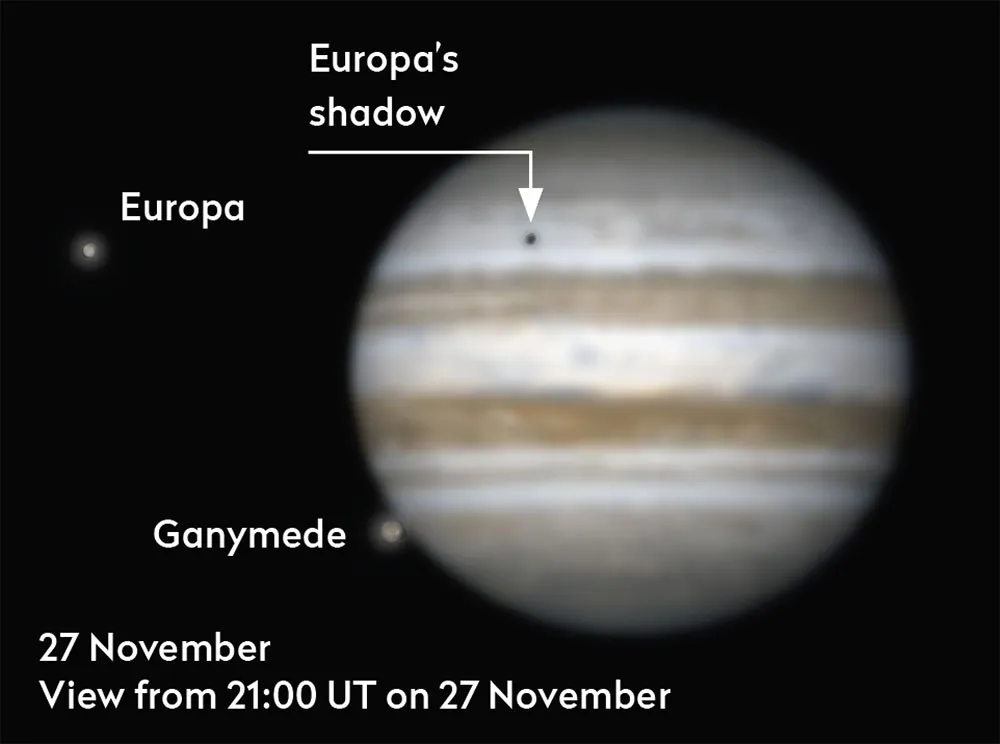Jupiter reached opposition on 26 September 2022, and even after opposition the gas giant planet will be a great target to observe throughout November.
Even with a small or medium refractor telescope you'll be able to make out Jupiter's distinct bands and see its 4 largest moons - known as the Galilean moons - in orbit around the planet.
If you're lucky enough to own a larger telescope, however, you'll be able to see a wealth of atmospheric detail on Jupiter.
But owners of smaller scopes will still be able to enjoy some amazing interactions between Jupiter and its 4 largest moons: Io, Europa, Ganymede and Callisto.
For full dates and times, read Pete Lawrence's wonderful guide on observing Jupiter's moons.

On 2 November, Europa and Ganymede can both be seen passing by Jupiter, from our perspective on Earth.
Io will very close to the planet’s western limb at this time, and will appear to pass behind Jupiter in an event known as an occultation.
Europa and Ganymede then appear to race across Jupiter’s disc.
Ganymede’s shadow makes an appearance on 3 November, forming a double shadow transit with Europa’s shadow.

On 6 November Ganymede emerges from Jupiter’s shadow 1.1 arcminutes east of the planet.
Europa and Ganymede are in transit again on the morning of 10 November.
Late on 18 November and in the early hours of 19 November, Callisto will appear to almost touch Jupiter’s northern limb.

And on the evening of 27 November, Ganymede will be occulted by Jupiter.

It's set to be a wonderful month of observing Jupiter and its moons. And even if you don't manage to get out and see these Galilean moon events, it's still worth pointing your telescope at the gas giant and contemplating exactly what you're seeing: the largest planet in our Solar System and its four largest moons.
And somewhere in that system, a human spacecraft - NASA's Juno probe - is having a look too.
